Synthese und Synthesizer
Veröffentlicht am 15/03/2023
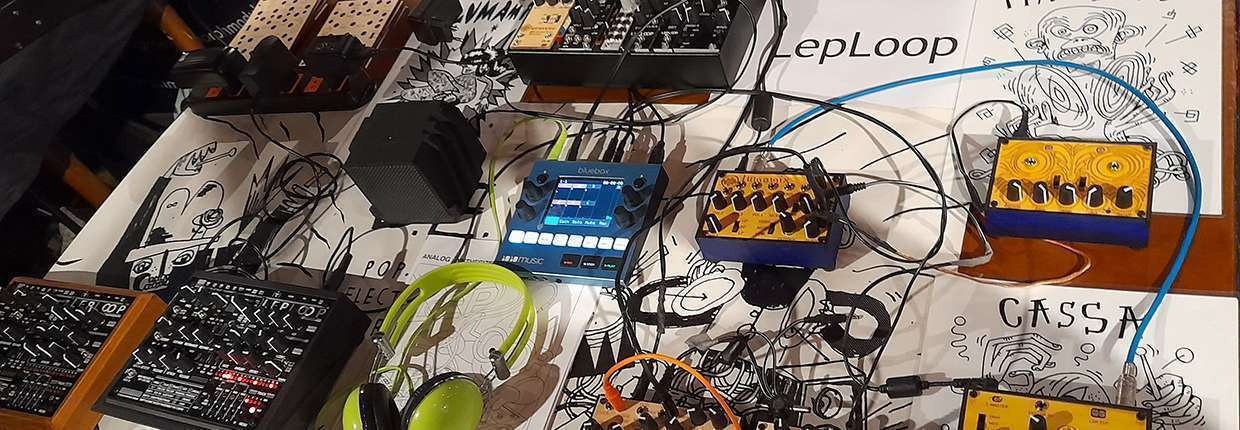
L.E.P. (Laboratorio Elettronico Popolare) was born after the artistic (and technical) relationship between
Tonylight (audio-visual artist) and the analog alchymist Peppo Lasagna.
The L.E.P. objective is to design and deliver open source electronic devices to create sounds, images, videos and lights.
As reported by Digicult, L.E.P. is, by definition, surplus hardware, programming on bare metal, obsolete technologies ranging from the can opener to the supercomputer passing through the radio and the television.
The systems released by L.E.P. generate sounds and lights by modulating audio signals coming from the most various sources.
Electromagnetic waves and physical events are the base for signal modulations meant to support the creative experiences.
We met them at Roma Modulare 2022 where we had the chance to see and try their instruments.
This is a minimalistic groovebox thought for live applications. It can be used for several music genres.
Small dimensions should not fool you about its aggressive nature with the new version (V3 was presented at Roma Modulare) adding further features to the tool.
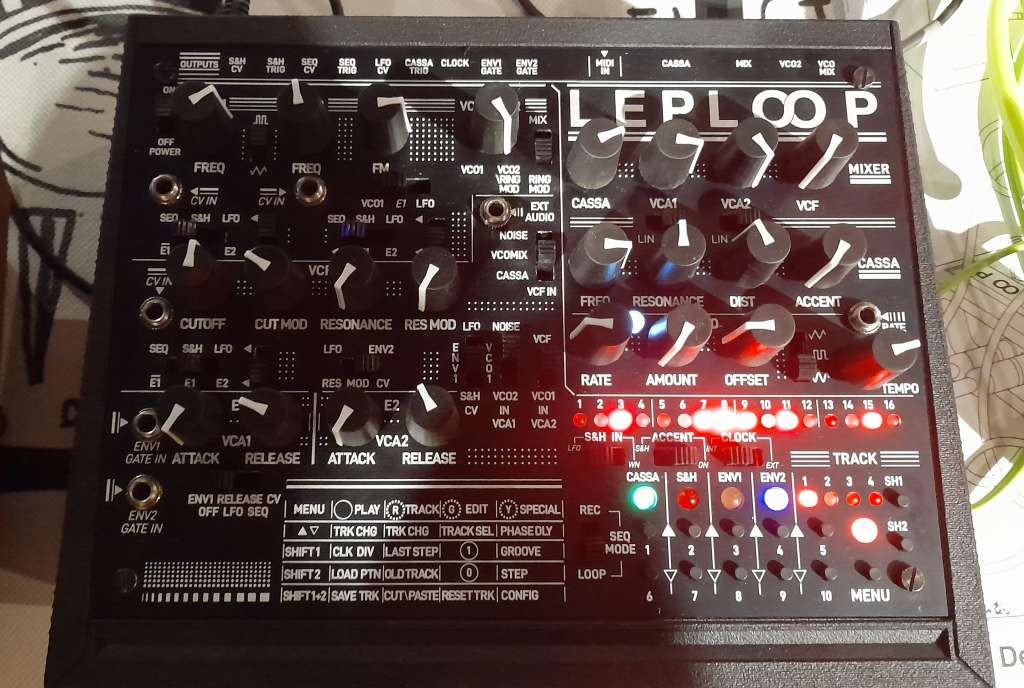
LEPLoop includes following components:
The 4 audio signals: Cassa, VCA2, VCA2, VCF are handled by the Mixer and sent to the Mix output. The Cassa has its own output.
The analog sequencer used the capacitors to store the steps. This creates pitch losses during the performance. The sequence cannot be permanently stored.
Check a LEPLoop release V3 demo here:
Another interesting proposal by L.E.P. is Lumanoise.
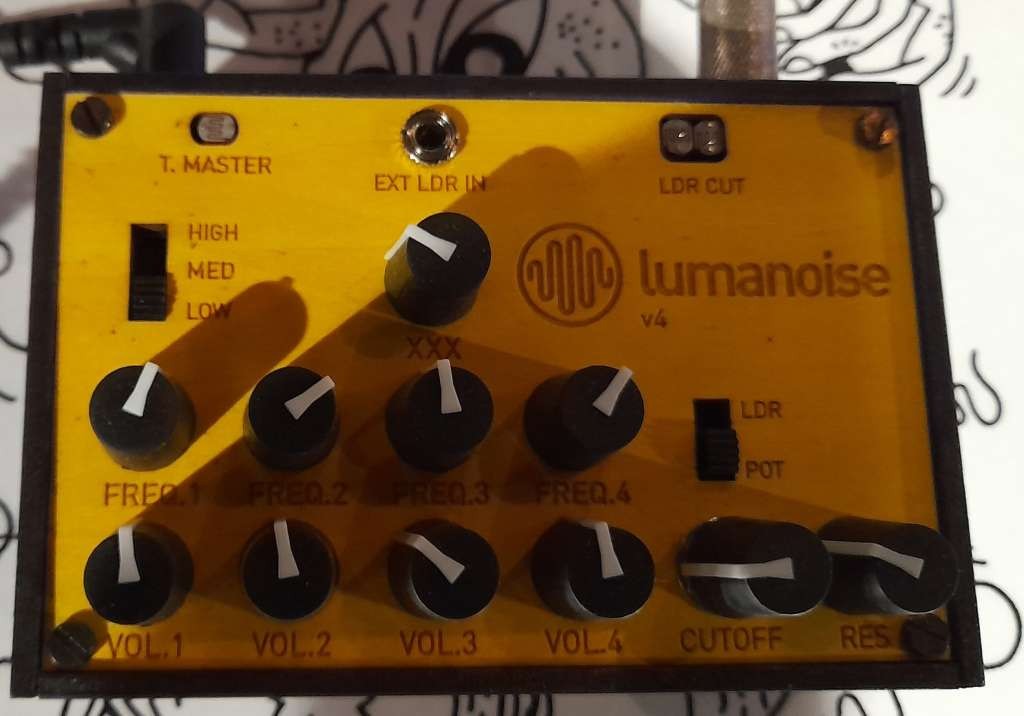
Lumanoise is a family of LDR (Light Dependent Resistor) synths based on a CMOS circuit to create square waves and sawtooth oscillators. All the models share the same design of the resonant LPF.
The oscillator’s pitch is controlled by the amount of light coming into the LDR. The more the light intensity, the higher is the generated pitch.
The first prototype was inspired by the Micro Noise, designed by the Swiss Collective DIY Make Away. This was based on the 4093 chip.
Newer models are based on 40106, 4060 and 4040 chips.
The transistor based resonant LPF has been developed by L.E.P. for this project.
Lumanoise has been developed to support the performances by Otolab Megatsunami.
The family is composed by 12 models:
The family is composed by 12 models:
Eurorack percussion modules are also part of the L.E.P. catalog.
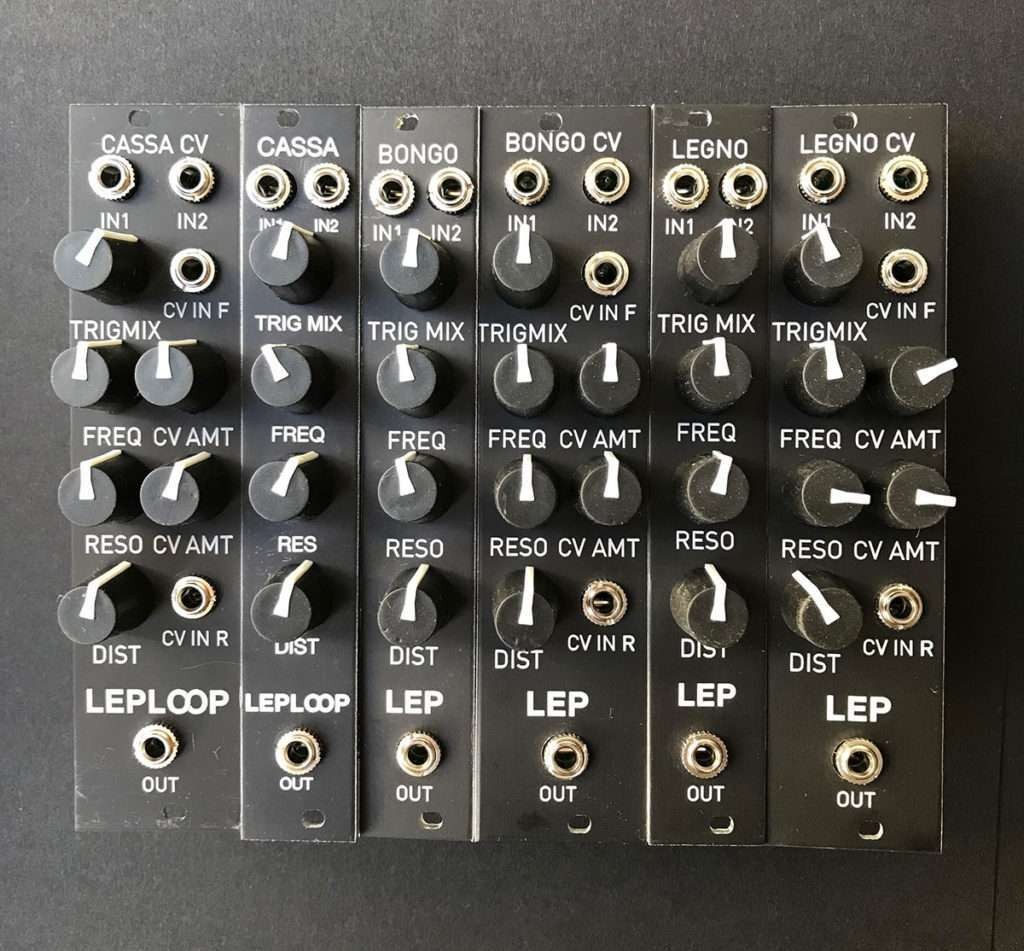
We have:
Multicassa is an instrument made by three Kick generators controlled by a Trautonium inspired rhythm generator.
Every kick has a different pitch and every channel generates scratch noise while manually varying the frequency.
The poly rhythms are generated by a frequency divider applied to the clock generator. The frequency of the latter is divided by a variable quantity. The resulting sounds are sent to the Trig Mix to generate complex polyrhythms.
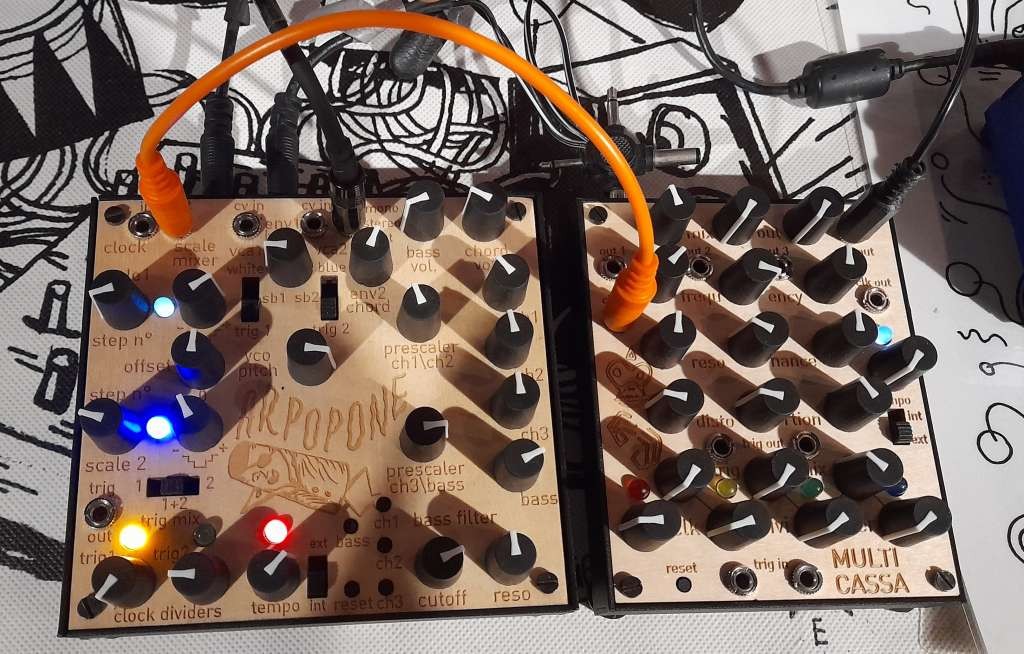
Another L.E.P. device is Aropone. It is a melodies and basslines generator with a section dedicated to chords and rhythms.
It uses an analog ramp divider similar to the one used in Multicassa.
In the following video Multicassa and Aropone are played together.
As we already said, the Company derives from an artistic collaboration.
This is something that has happened several times in the field of electronic music (a couple of significative examples being Moog with Herbert Deutsch and Walter Carlos and Buchla with Morton Subotnick and Ramon Sender).
This kind of collaboration often leads to very interesting results.
L.E.P. is a Company well integrated with the artistic and social scene of Italian electronic music. Electronic to support audio-visual art. Good job!
Sei dabei und sichere dir 5% Rabatt auf deine nächste Bestellung!

Leerer Wagen